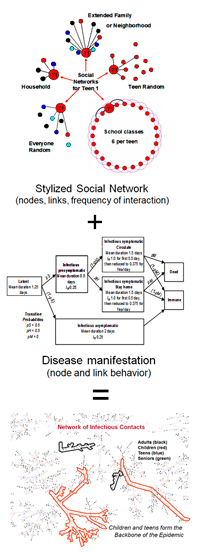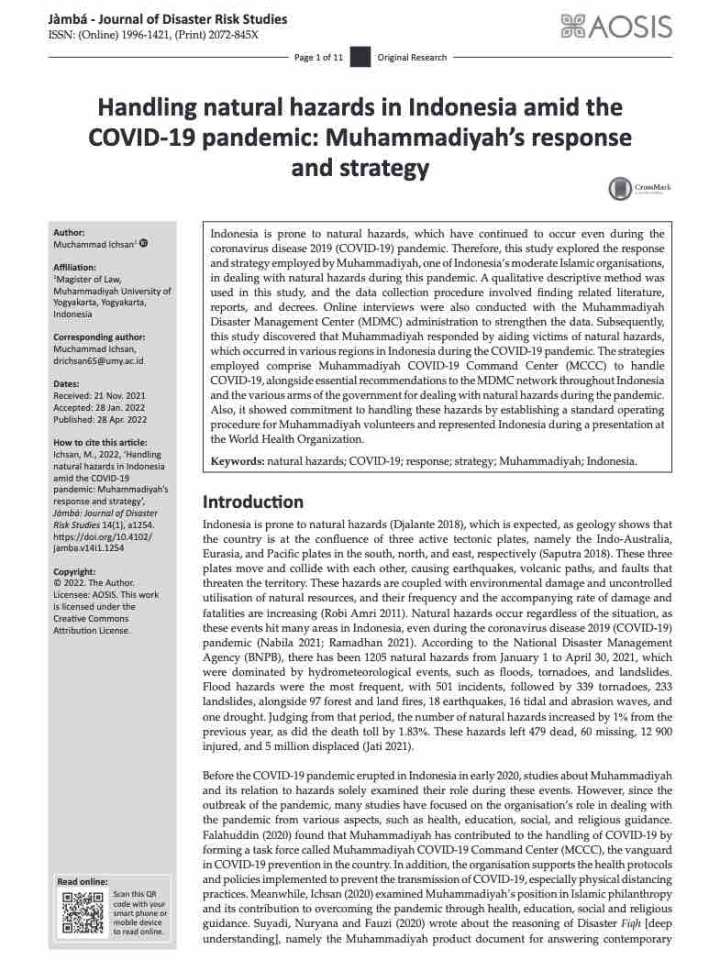Containment Mastery: Strategies for Pandemic Triumph

Introduction
In the battle against a pandemic, effective containment strategies are the linchpin for triumph. This article delves into the essential strategies employed to contain a pandemic, exploring the multifaceted approaches that contribute to curbing the spread of infectious diseases and safeguarding global health.
Early Detection and Surveillance
The foundation of pandemic containment lies in early detection and surveillance. Timely identification of potential outbreaks allows for swift response measures. Robust surveillance systems, monitoring symptoms and testing, enable health authorities to track and trace the virus, preventing its uncontrolled spread within communities.
Strategic Quarantine and Isolation Measures
Strategic quarantine and isolation measures play a pivotal role in limiting the transmission of infectious diseases. By isolating confirmed cases and implementing targeted quarantines for individuals at risk, authorities can break the chains of transmission and prevent widespread community outbreaks.
Mass Testing Initiatives
Mass testing initiatives are a key component of containment strategies. Implementing widespread testing allows for the identification of asymptomatic carriers and early intervention. By expanding testing capabilities and accessibility, health authorities can quickly identify and isolate individuals who may unknowingly spread the virus.
Effective Contact Tracing
Contact tracing is a meticulous process that involves identifying and notifying individuals who have been in close contact with confirmed cases. Leveraging technology, efficient contact tracing systems streamline the identification process, enabling rapid notification, testing, and isolation of potentially exposed individuals.
Stringent Travel Restrictions
In a globally connected world, travel can contribute significantly to the spread of infectious diseases. Implementing stringent travel restrictions, including border controls, quarantine protocols, and travel bans when necessary, is a crucial strategy to prevent the introduction and exportation of the virus across regions.
Public Health Education and Communication
Effective containment strategies rely on clear and consistent public health education and communication. Informing the public about the virus, preventive measures, and the importance of adherence to guidelines fosters a collective understanding. Transparent communication builds trust and encourages widespread compliance.
Vaccination Campaigns
Vaccination is a cornerstone in the long-term containment of a pandemic. Rapid and widespread vaccination campaigns contribute to achieving herd immunity, reducing the severity of illness, and preventing the uncontrolled spread of the virus. Vaccination efforts are integral to ending the pandemic and preventing future outbreaks.
Community Engagement and Cooperation
Containment strategies are most effective when communities actively engage and cooperate. Fostering community cooperation through outreach, education, and collaboration with local leaders builds a unified front against the virus. Communities that actively participate in containment efforts contribute significantly to overall success.
Adaptive Governance and Response
Adaptive governance and response are critical in the face of a rapidly evolving pandemic. Governments and health authorities must continuously assess the situation, adapt strategies based on emerging data, and deploy resources where they are most needed. An agile and responsive approach enhances the effectiveness of containment measures.
International Collaboration for Global Health
Pandemics transcend borders, necessitating international collaboration for global health security. Sharing information, resources, and expertise across nations strengthens the collective response to the pandemic. International cooperation is vital for developing and implementing containment strategies that address the interconnected nature of global health.
Conclusion with Link
In conclusion, pandemic containment strategies require a multifaceted and collaborative approach. For further insights into effective containment strategies and global health security, visit The Healthy Consumer website. Stay informed, stay vigilant, and contribute to the triumph over pandemics.
Effective Pandemic Testing: Protocols and Strategies

Effective Pandemic Testing: Protocols and Strategies
In the face of global health crises, the importance of robust Pandemic Testing Protocols cannot be overstated. This article explores the significance of effective testing strategies and protocols in mitigating the spread of infectious diseases.
The Foundation of Early Detection
Pandemic Testing Protocols form the foundation of early detection efforts. Swift identification of individuals carrying the virus is essential for preventing further transmission. Early detection allows for timely intervention, minimizing the impact of the pandemic on individuals and communities.
Strategic Testing Deployment
Strategic deployment of testing resources is a critical aspect of Pandemic Testing Protocols. Prioritizing testing in high-risk areas, among vulnerable populations, and at key points of potential transmission helps optimize resources and ensures that testing efforts have the greatest impact.
Variety of Testing Methods
Effective Pandemic Testing Protocols embrace a variety of testing methods. From PCR tests for accurate diagnosis to rapid antigen tests for quick results, a diverse range of testing modalities allows for flexibility and adaptability in different situations and settings.
Frequent and Mass Testing Initiatives
Frequent and mass testing initiatives play a pivotal role in Pandemic Testing Protocols. Regular testing, especially in high-contact environments such as workplaces and schools, helps identify asymptomatic carriers and prevent outbreaks before they escalate.
Contact Tracing Integration
Pandemic Testing Protocols are most effective when integrated with robust contact tracing efforts. Testing and contact tracing work hand in hand to identify and isolate infected individuals and trace potential exposure, creating a comprehensive strategy for containment.
Ensuring Accessibility and Equity
Equitable access to testing is a cornerstone of effective Pandemic Testing Protocols. Ensuring that testing is readily available to all, regardless of socioeconomic factors, promotes early detection and prevents the disproportionate impact of the virus on marginalized communities.
Clear Communication of Results
Communication of test results is a crucial component of Pandemic Testing Protocols. Clear and timely communication helps individuals understand their status, take appropriate precautions, and contribute to overall public health efforts in containing the spread of the virus.
Rapid Response to Emerging Variants
Pandemic Testing Protocols must include mechanisms for rapid response to emerging variants. Continuous monitoring and adaptation of testing strategies in response to new developments ensure that testing remains effective against evolving strains of the virus.
Public Awareness and Education
Public awareness and education play a vital role in the success of Pandemic Testing Protocols. Clear communication about the importance of testing, the availability of testing facilities, and the significance of individual responsibility contributes to increased testing uptake and adherence.
Integration with Vaccination Campaigns
Integration of Pandemic Testing Protocols with vaccination campaigns creates a comprehensive approach to public health. Testing remains crucial even as vaccination efforts progress, allowing for the identification of breakthrough infections and the monitoring of overall community health.
Visit The Healthy Consumer to explore comprehensive resources and support for understanding and participating in effective Pandemic Testing Protocols. Together, let’s build a resilient defense against the spread of infectious diseases.
Strategic Containment: Navigating the Pandemic Challenges

Strategic Containment: Navigating the Pandemic Challenges
The global pandemic has necessitated the development and implementation of strategic containment strategies to curb the spread of the virus and mitigate its impact on public health and society. This article explores the multifaceted nature of containment strategies, shedding light on their importance and diverse applications in navigating the challenges posed by the ongoing pandemic.
Containment Strategies Pandemic: A Comprehensive Guide
For a comprehensive guide on containment strategies during the pandemic, visit Containment Strategies Pandemic for valuable insights and resources.
Testing and Early Detection:
One of the key pillars of strategic containment is widespread testing and early detection of COVID-19 cases. Timely identification allows for prompt isolation and treatment, preventing further transmission. Robust testing infrastructure and widespread availability of testing facilities contribute to effective containment efforts.
Quarantine and Isolation Protocols:
Implementing effective quarantine and isolation protocols is essential to prevent the spread of the virus. Individuals who have been exposed to the virus or tested positive must adhere to isolation guidelines. Clear communication of these protocols and support for those in isolation are crucial components in ensuring compliance.
Contact Tracing Initiatives:
Contact tracing plays a vital role in identifying and notifying individuals who may have been exposed to the virus. Technology, such as mobile apps and digital tools, has been employed to enhance the efficiency of contact tracing efforts. Balancing privacy concerns while maximizing the effectiveness of contact tracing remains a key consideration.
Vaccination Rollout Programs:
The rollout of vaccination programs is a cornerstone in the strategic containment of the pandemic. Governments and health authorities globally have worked to ensure the equitable distribution of vaccines, aiming to achieve widespread immunity. Vaccination not only protects individuals from severe illness but also contributes to community-wide immunity.
Public Health Awareness Campaigns:
Public health awareness campaigns are instrumental in fostering a sense of shared responsibility and educating the public about containment measures. These campaigns disseminate accurate information about the virus, vaccination, and preventive measures. Clear and consistent messaging helps build trust and encourages adherence to recommended guidelines.
Travel Restrictions and Border Control:
Strategic containment extends to travel restrictions and border control measures. Governments have implemented various restrictions on international and domestic travel to limit the movement of the virus. Monitoring and regulating border crossings contribute to preventing the introduction and spread of new variants.
Hygiene Practices and Protective Measures:
Promoting hygiene practices and protective measures is essential in containing the virus’s spread. Emphasizing the importance of regular handwashing, mask-wearing, and maintaining physical distancing contributes to minimizing the risk of transmission in various settings, including public spaces and workplaces.
Community Engagement and Empowerment:
Engaging communities and empowering individuals to actively participate in containment efforts is crucial. Communities play a central role in adherence to guidelines, supporting those affected, and fostering a collective commitment to containment. Empowering individuals through education and community involvement strengthens the overall effectiveness of containment strategies.
Adaptability and Data-Driven Decision-Making:
The dynamic nature of the pandemic requires an adaptable approach to containment strategies. Utilizing real-time data and analytics enables authorities to make informed decisions based on the evolving situation. Flexibility in adjusting strategies based on data trends contributes to the effectiveness of containment efforts.
Global Collaboration for Comprehensive Containment:
Strategic containment is not limited by national borders, emphasizing the need for global collaboration. Sharing information, resources, and best practices on a global scale contributes to comprehensive containment. International cooperation in vaccine distribution, research, and containment strategies fosters a united front against the pandemic.
Conclusion:
Strategic containment strategies are pivotal in navigating the challenges posed by the ongoing pandemic. From widespread testing and early detection to quarantine protocols, contact tracing initiatives, vaccination rollout programs, public health awareness campaigns, travel restrictions, hygiene practices, community engagement, adaptability, and global collaboration, each aspect contributes to a comprehensive and effective containment approach. As the world continues to combat the virus, a strategic and collaborative containment strategy remains essential in safeguarding public health and promoting a swift recovery.
Strategic Responses: Navigating Pandemic Challenges

Crafting Effective Responses: Navigating Pandemic Challenges
The unprecedented challenges posed by a global pandemic demand strategic and adaptive responses. In navigating these complex scenarios, effective pandemic response strategies emerge as crucial tools for mitigating the impact, safeguarding communities, and fostering resilience.
Understanding the Dynamic Nature of Pandemics
The foundation of effective pandemic response lies in a comprehensive understanding of the dynamic nature of these global health crises. Recognizing that pandemics evolve, presenting different challenges at various stages, allows for the formulation of strategies that are agile, adaptive, and rooted in real-time data and insights.
Collaborative Governance and Interagency Coordination
A successful pandemic response requires collaborative governance and seamless interagency coordination. Governments, healthcare systems, and relevant agencies must work together cohesively. Establishing clear communication channels, sharing resources, and coordinating efforts ensure a unified response that is vital in managing the complexities of a pandemic.
Implementing Early Detection and Surveillance Systems
Early detection is paramount in controlling the spread of a pandemic. Implementing robust surveillance systems, both at local and global levels, facilitates early identification of outbreaks. Monitoring trends, analyzing data, and swiftly responding to emerging threats enable authorities to contain and manage the impact of the pandemic effectively.
Strategic Testing and Contact Tracing Initiatives
Strategic testing and contact tracing initiatives form the bedrock of a targeted response. Widespread and accessible testing, coupled with efficient contact tracing, allows for the identification and isolation of cases promptly. This strategic approach helps break the chains of transmission and prevents the exponential spread of the virus.
Healthcare System Preparedness and Capacity Building
Ensuring the preparedness and capacity of healthcare systems is a critical aspect of pandemic response. This involves strengthening healthcare infrastructure, securing adequate medical supplies, and enhancing the capacity of healthcare professionals. A robust healthcare system is essential for managing the influx of patients and providing quality care.
Communication and Public Awareness Campaigns
Transparent and timely communication is indispensable in a pandemic response. Implementing effective communication strategies and public awareness campaigns disseminate accurate information, dispel myths, and foster a sense of collective responsibility. Informed communities are more likely to adhere to preventive measures, contributing to the overall success of the response.
Balancing Social and Economic Impacts
Pandemic response strategies must strike a delicate balance between addressing the health crisis and mitigating social and economic impacts. Implementing measures to support individuals and businesses affected by the pandemic, such as financial aid packages, unemployment support, and targeted economic stimulus, contributes to a more holistic response.
Prioritizing Vulnerable Populations and Equity
An equitable pandemic response prioritizes the needs of vulnerable populations. This includes the elderly, individuals with underlying health conditions, and marginalized communities. Tailoring strategies to address the specific challenges faced by these groups ensures that the response is inclusive and leaves no one behind.
International Cooperation and Information Sharing
Pandemics transcend borders, underscoring the importance of international cooperation. Sharing information, expertise, and resources on a global scale enhances the collective response. Collaborative efforts among nations foster a sense of solidarity and enable a more effective and coordinated approach to managing and overcoming the pandemic.
To delve deeper into effective pandemic response strategies, visit Pandemic Response Strategies. As the world grapples with the challenges posed by global health crises, implementing thoughtful and strategic responses is imperative. By understanding the evolving nature of pandemics, fostering collaboration, and prioritizing the well-being of communities, nations can navigate these challenges with resilience and effectiveness.
Containment Mastery: Effective Pandemic Measures

Crafting a Shield: Navigating Pandemic Containment Measures
In the face of global health crises, the efficacy of pandemic containment measures becomes paramount. These measures form a strategic shield against the spread of infectious diseases, requiring a comprehensive approach that encompasses early detection, swift response, and collaborative efforts on a global scale.
Early Detection: The First Line of Defense
The foundation of effective pandemic containment lies in early detection. Swift identification of potential outbreaks enables authorities to implement targeted measures to curb the spread. Early detection mechanisms, such as robust surveillance systems and widespread testing initiatives, form the frontline defense against the rapid transmission of infectious diseases.
Strategic Testing Protocols: Identifying and Isolating Cases
Strategic testing protocols play a pivotal role in pandemic containment. Standardized and widespread testing ensures the identification and isolation of cases, preventing further transmission. Implementing evidence-based testing strategies aligned with the nature of the infectious agent strengthens the overall containment effort and helps break the chains of transmission.
Contact Tracing Initiatives: Breaking Transmission Chains
Once cases are identified, contact tracing initiatives become instrumental in breaking the transmission chains. Swift and efficient contact tracing, supported by technology and collaborative efforts, enables authorities to isolate and provide care to those exposed. This targeted approach enhances the precision of containment measures, minimizing the impact on the broader population.
Quarantine and Isolation Measures: Restricting Spread
Quarantine and isolation measures form essential components of pandemic containment. By isolating confirmed cases and quarantining those potentially exposed, authorities can restrict the spread of the infectious agent. Strategic implementation of quarantine measures, guided by international health guidelines, helps protect vulnerable populations and prevents overwhelming healthcare systems.
Public Awareness and Communication: Fostering Compliance
Transparent communication and public awareness campaigns are critical elements in fostering compliance with containment measures. Clear and accessible communication about the importance of preventive measures, such as mask-wearing and social distancing, encourages widespread adherence. Public cooperation is essential for the success of containment strategies.
Cross-Border Collaboration: A Global Endeavor
Pandemics recognize no borders, emphasizing the need for cross-border collaboration. International cooperation in sharing information, resources, and expertise strengthens the global response. Collaborative efforts ensure a unified front against the spread of infectious diseases, fostering a sense of solidarity and resilience.
Vaccine Distribution: A Definitive Containment Strategy
As vaccines become available, their equitable distribution emerges as a definitive containment strategy. Vaccination campaigns, guided by international guidelines, aim to achieve widespread immunity, curbing the impact of the pandemic. Ensuring fair access to vaccines globally contributes to a more comprehensive and effective containment effort.
Adaptive Strategies for Variants: Staying Ahead
The dynamic nature of infectious agents requires adaptive strategies for containment. As variants emerge, authorities must stay ahead of the curve. Continuously monitoring and adapting containment measures to address new challenges is crucial for maintaining the effectiveness of the overall strategy.
Global Surveillance Networks: Vigilance Across Borders
Global surveillance networks play a pivotal role in maintaining vigilance across borders. Collaborative efforts in monitoring and sharing data on emerging threats contribute to early detection and containment. These networks are essential components of a proactive and interconnected global health system.
Continuous Evaluation and Improvement: Learning from Experience
Pandemic containment measures demand continuous evaluation and improvement. Learning from experience, analyzing the effectiveness of implemented strategies, and adjusting measures based on lessons learned contribute to a more resilient and adaptable response in the face of evolving health crises.
To explore more about pandemic containment measures, visit Pandemic Containment Measures. As the global community confronts the challenges of infectious diseases, the mastery of containment measures becomes a collective responsibility. By embracing early detection, strategic testing, and collaborative efforts, nations can navigate pandemics with resilience and safeguard the well-being of their populations.




